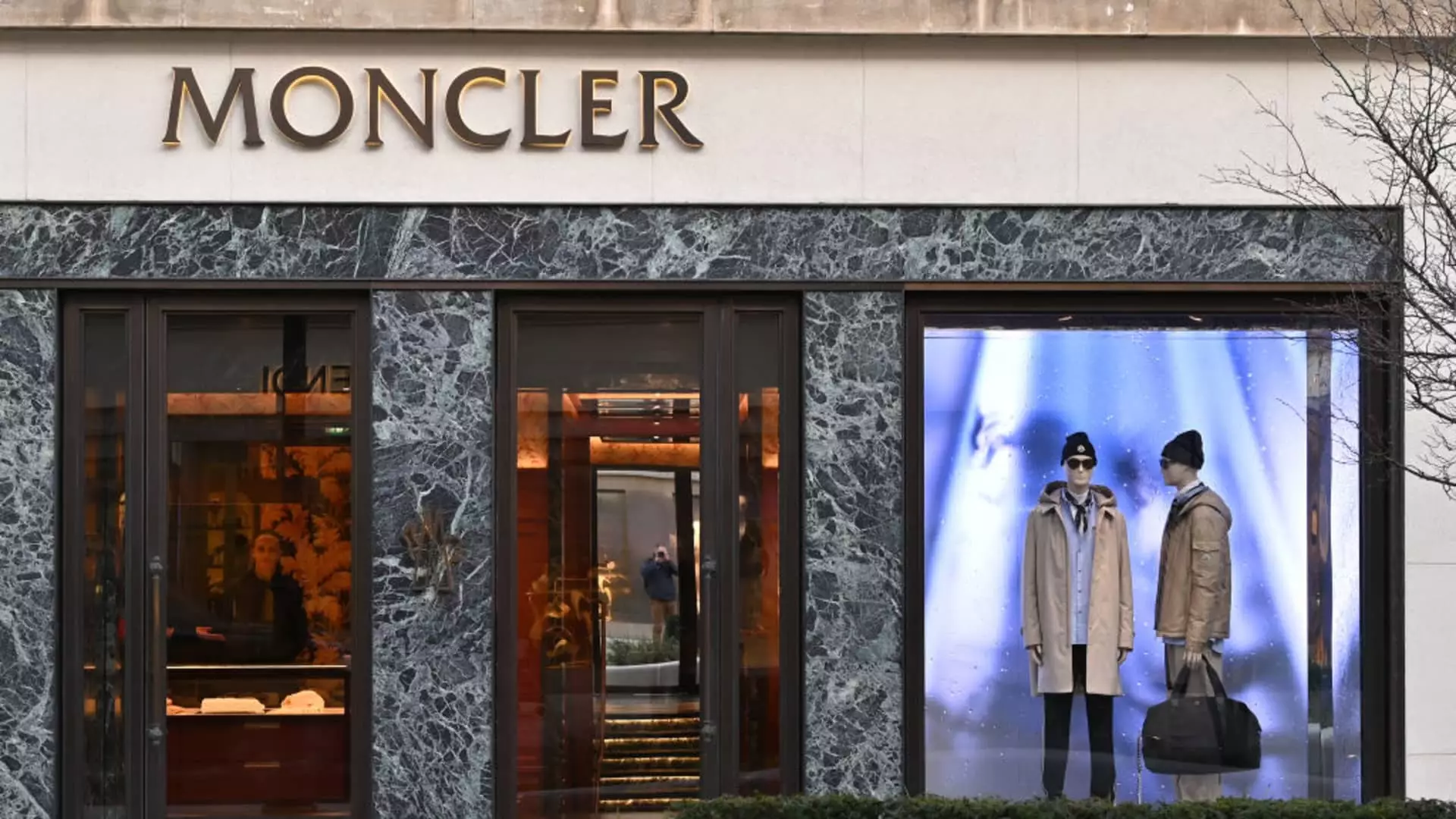In an industry where exclusivity often justifies premium pricing, Moncler’s recent strategy of modest price hikes reveals a tense negotiation between maintaining brand prestige and accommodating an increasingly cautious consumer base. Slightly raising prices—what the company characterizes as “very slight” and “mid-single-digit” increases—is a risky game. It signifies a fragile attempt to offset mounting input costs and uncertain tariffs, yet it also risks alienating consumers who are already deterred by economic headwinds. This cautious approach underscores a fundamental dilemma: how far can a luxury house push before eroding the very exclusivity that grants it value?
Moncler’s decision to hold back from more aggressive hikes illustrates vulnerability—recognition of the volatile economic landscape that could tighten consumer wallets. While theoretically, a small price increase could be absorbed by high-net-worth individuals, the reality is more complex. Such consumers are increasingly scrutinizing their discretionary spending, especially in a climate where global economic growth shows signs of stagnation. Moncler’s hesitation signals that it might be reaching the limits of its pricing power, risking a hollow victory if these increased prices dissuade customers from buying altogether.
Economic Headwinds and Their Toll on Expansion Plans
Moncler’s approach to expansion is equally telling of the industry’s fragility. The luxury brand’s tentative stance on opening new stores in 2026 sheds light on broader economic fears. While optimism about recovery persists, the caution surrounding plans for future retail outlets echoes a deeper anxiety: can the global economy sustain the demand necessary for these high-end investments? The company’s flexible approach—ready to delay or scale back store openings—indicates recognition that the market’s rebound remains uncertain at best.
This strategic hesitation exposes a paradox at the heart of luxury economics. Historically, expansion has been a sign of confidence and growth, but in times of geopolitical instability and macroeconomic uncertainty, it becomes an act of prudence—sometimes even a necessity. Moncler’s reticence hints at an industry that is increasingly vulnerable to external shocks: fluctuating currencies, shifting tourist flows, and geopolitical tariffs threaten the delicate ecosystem of high-end retail. Not planning for aggressive expansion safeguards resources, but it also risks missing out on potential growth as markets stabilize and demand recovers.
Market Dynamics: Winners and Losers in a Struggling Sector
The recent financial figures portray a luxury sector marred by inconsistency and external pressures. Moncler’s 1% decline in quarterly revenues highlights that even the most resilient brands cannot escape the ripple effects of global volatility. Tourist-dependent markets—the U.S., China, Europe—all demonstrate varying degrees of softness. Notably, weak tourist flows, a consequence of ongoing travel restrictions and geopolitical tensions, have abruptly dampened sales growth in sectors that were once booming.
The modest 5% sales uptick in the U.S. reflects a nuanced reality. While somewhat positive, it is murkily linked to preemptive purchasing behavior driven by looming tariffs, rather than genuine consumer confidence. This introduces a layer of vulnerability: brands are increasingly at the mercy of external policy decisions rather than organic growth. Moncler’s cautious acknowledgment of these factors reveals an understanding that the upward trajectory is fragile, and the recent performance could easily dip into decline if macroeconomic conditions worsen.
In the Asian markets, especially Japan, softness in tourist spending exposes the vulnerability of relying heavily on international visitors. The flat sales figures for Asia emphasize a crucial point: the global luxury market’s recovery is uneven at best. This unevenness, compounded by currency rebalancing and geopolitical tensions, threatens to stall the sector’s broader revival.
Is Luxury’s House of Cards Ticking?
Ultimately, Moncler’s current predicament reflects a larger truth: the luxury industry’s reliance on external stability is a perilous gamble. As the company navigates price adjustments and expansion uncertainties, it reveals an industry teetering on the brink of fragility. Conservative strategies—like cautious pricing and flexible store openings—are vital, but they also communicate an acceptance of vulnerable market conditions. In a way, these strategies serve as a silent admission that the once-majestic luxury sector may be more fragile than its opulent image suggests, vulnerable to signs of economic distress that could easily morph into full-blown downturns.
The real challenge for brands like Moncler lies in balancing their aspirational appeal with the economic realities that threaten to curtail their growth. Maintaining exclusivity without alienating consumers requires a deft touch—one that recognizes the shifting priorities of a global audience increasingly wary of luxury’s rising costs. If history offers any lesson, it is that luxury’s health depends on a delicate equilibrium—one that is easily tipped by external shocks, currency fluctuations, and shifting consumer sentiment. Moncler’s current cautious stance might be wise, but it also signals an industry at a crossroads—where resilience will be tested not just by market forces, but by the very sustainability of a model that once seemed invincible.

